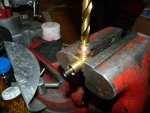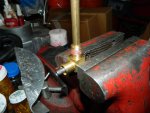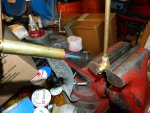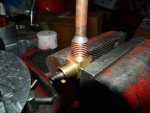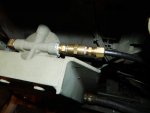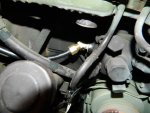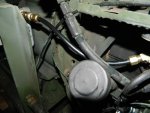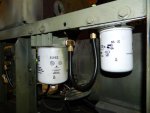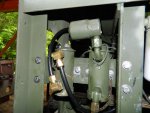cuad4u
Active member
- 268
- 89
- 28
- Location
- St Matthews, SC
I don't want to mention "price", but I got each of the gens for less than what a rebuilt IP would cost. As you mentioned, even cannibalized gens have a wealth of spare parts.Just curious, what price does a "cannibalized" condition" Mep go for? This could be a way for me also to get spare parts. It would appear that once the government gets rid of all the gensets parts will be hard to get at a reasonable price.
These 8 gens had been passed over at all the sales and had been sitting on the yard out in the weather for over 3 years. I guess they had a minimum "reserve" that nobody would match, so they did not sell. That is only my guess. After talking with the person in charge, he offered what I thought was a good deal but only if I bought all 8 gens. I think he just wanted to get rid of them and move on.
EVERY one was missing the 3 fuel pumps and EVERY one was missing the 3-section fuel filter assembly and all the fuel lines. Most were missing the oil filter canister, fuel tank, and many were missing various gauges. Several were missing the 24V voltage regulator. The gauge panels were all sun bleached and the panel silk screening could not be read. None was pretty to look at. I bought them mainly as a source of spare parts.
Over the winter I got bored. I started messing with them to see if I could take parts off this one and that one and have enough parts to make one or two run. I did get a few running. I could probably get more running but the cost to do so would probably be more than they are worth, or at least to sell. Each one I got running has a $35 after market diesel tractor fuel filter assembly (ebay), spin-on oil filter mod offered by a poster on this site, repaired (JB Weld) fuel tanks, one (not three) $30 after market 24V fuel pump (ebay), NAPA diesel fuel rated "rubber" fuel hoses secured to brass hose barb connectors by worm drive hose clamps, etc. I also had to switch and swap fuel injectors until I found those that "worked" properly. The running gens definitely are not mil-spec, but they run and work.
When all is said and done, I still have lots of parts left over that should help me keep the other 002A and 003A gens running for a long time.



